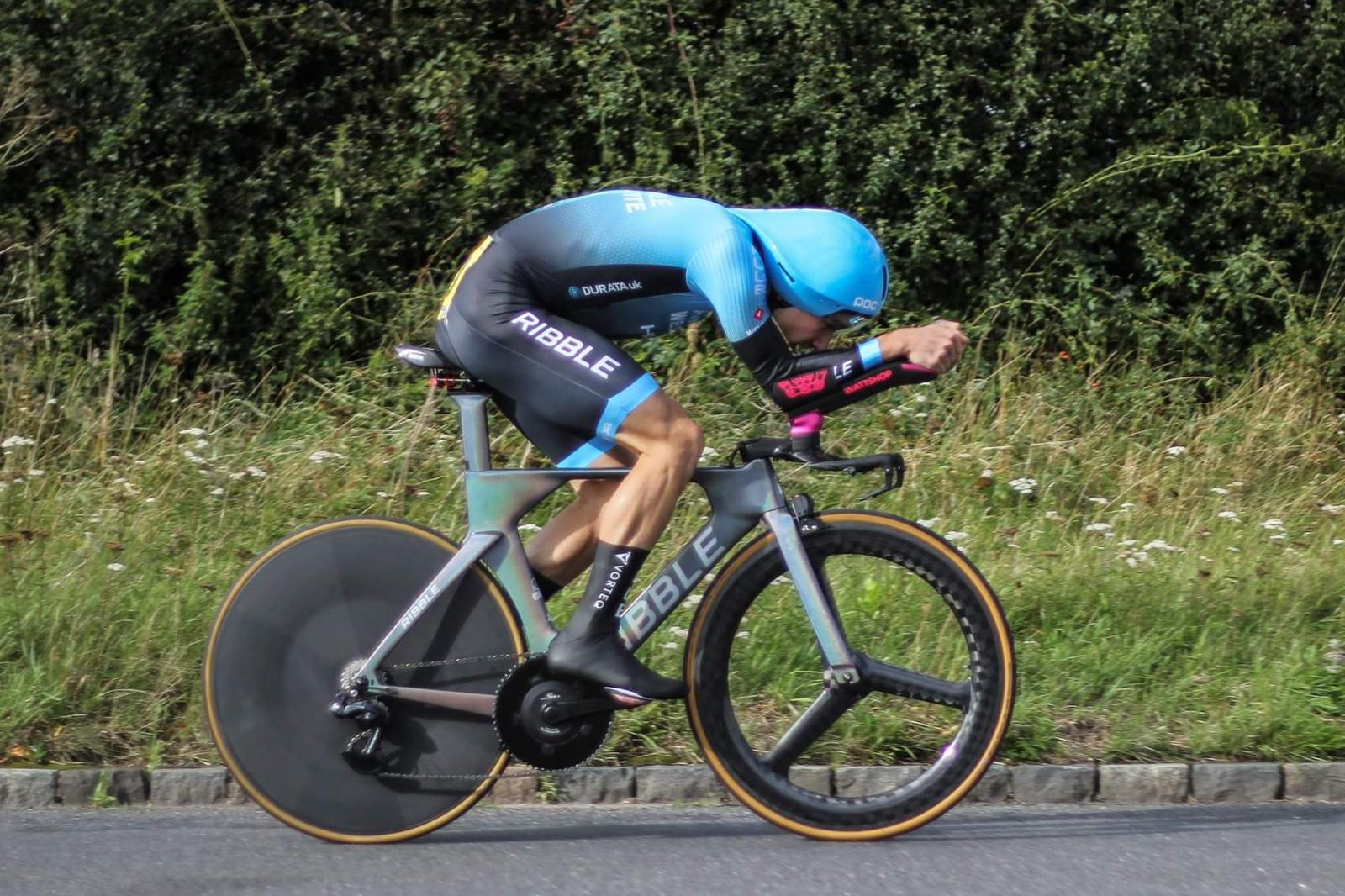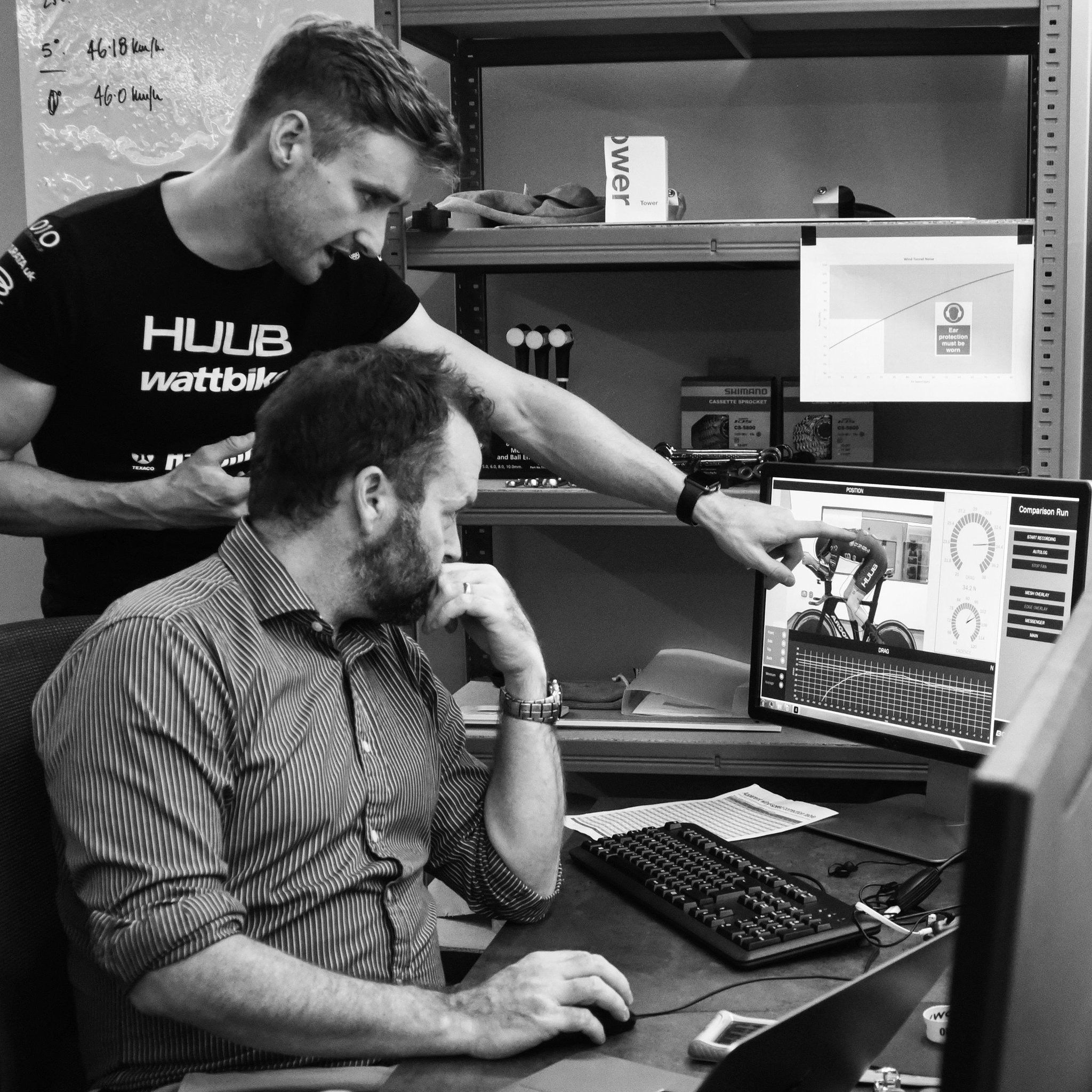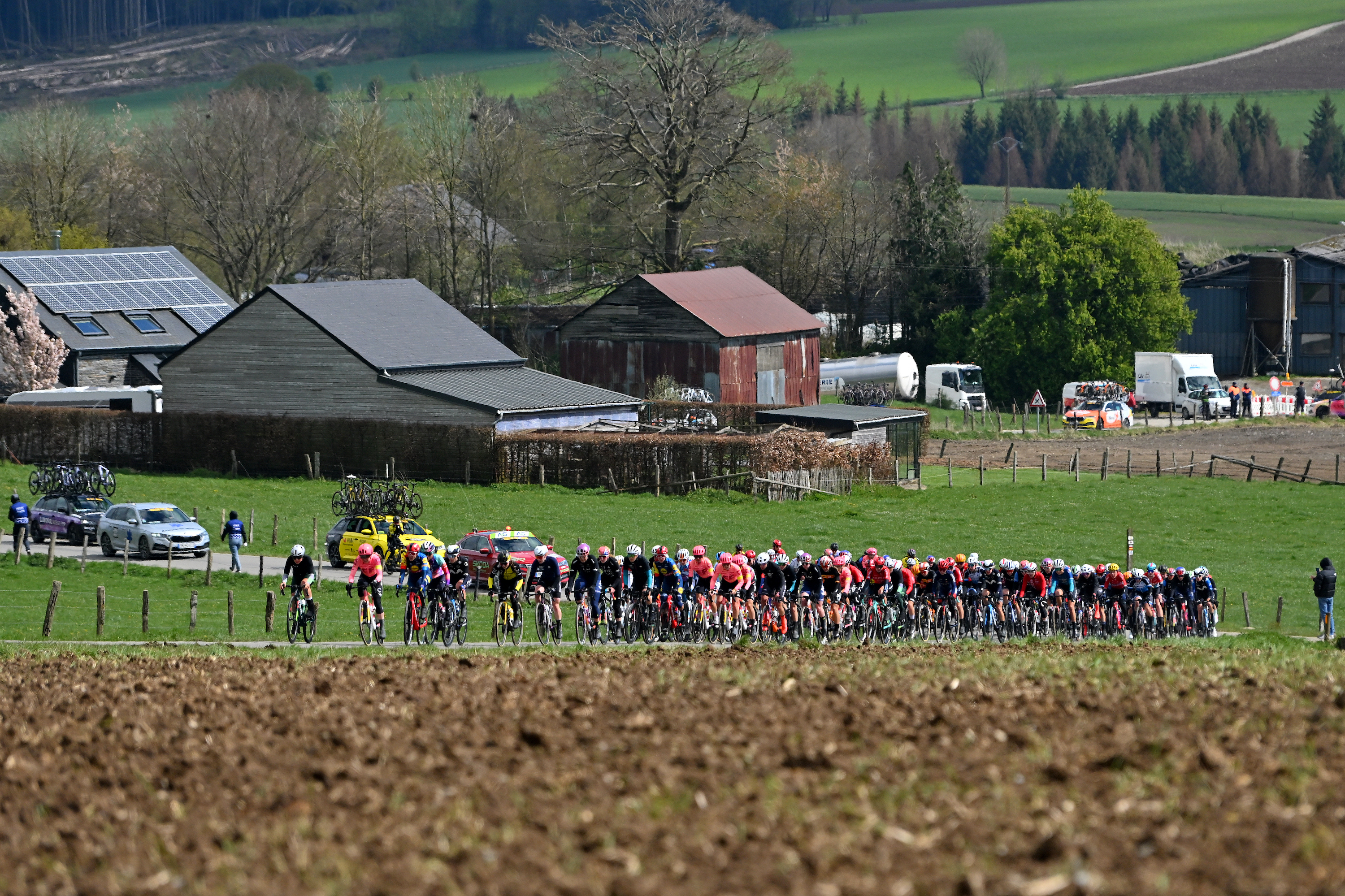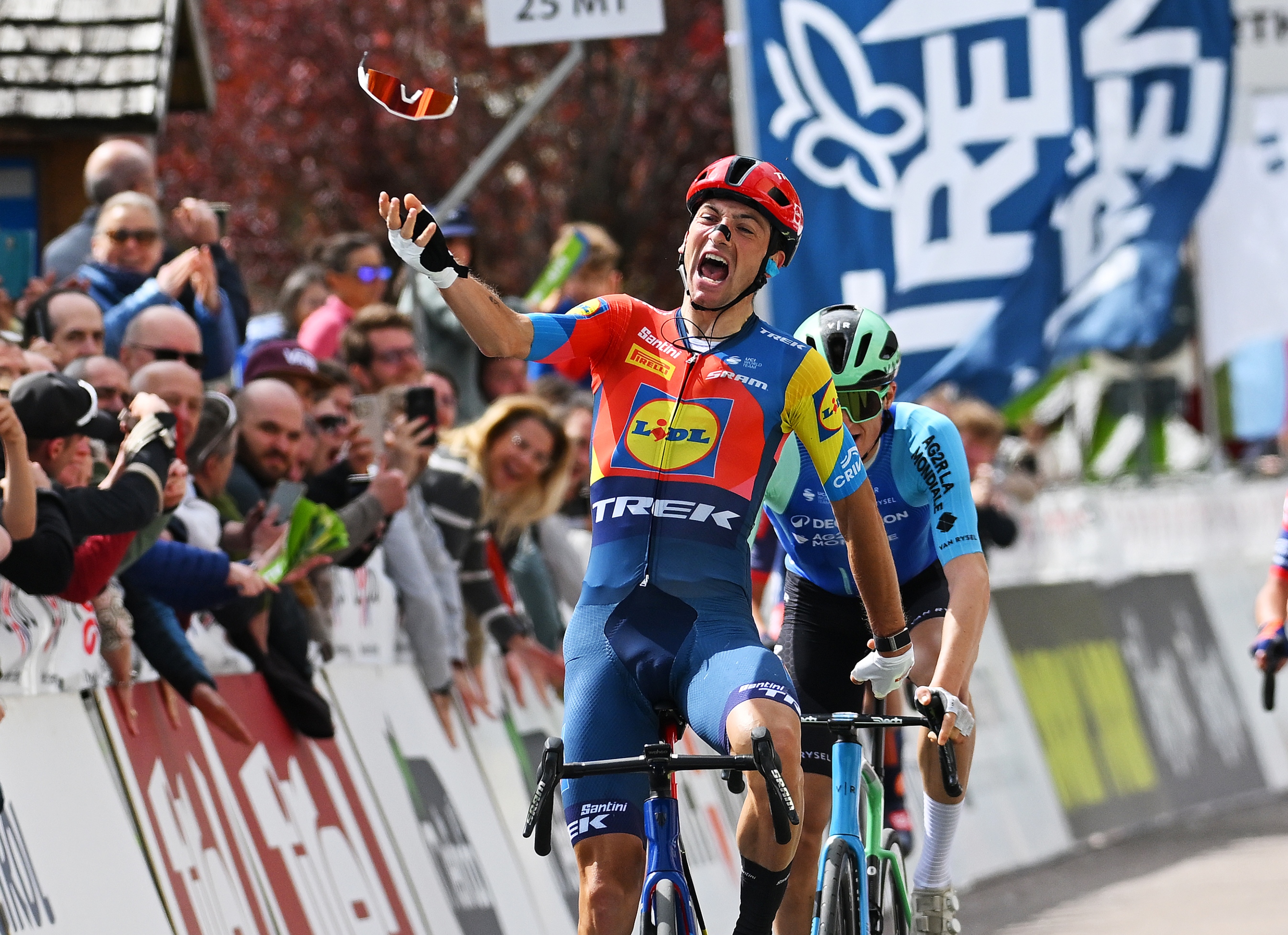Biggest watt saving for your investment? 'Buy a mirror,' says Dan Bigham
The two-time World Cup gold medallist and WorldTour advisor in aerodynamics shares some simple solutions - and says optimisation still matters at average club run speeds


If you’re a road racer looking to gain an advantage via aerodynamics, the greatest investment you could make might well be a mirror, according to racer and aerodynamicist Dan Bigham.
For time triallists, the balance between aerodynamic optimisation and physiology rests on a “knife-edge” so might require a little more investment, though Bigham says domestic testers are among the slipperiest riders he’s measured.
The WattShop aerodynamicist and Ribble-Weldtite rider, whose first book Start at the End: How Reverse-Engineering Can Lead to Success launches on May 13, talked to Cycling Weekly about optimising for road racing, time trials, and just plain riding for the joy of it.
“For road racers, the biggest [area for optimisation], pretty much full stop, is position. On a road bike, it’s pretty easy to change, it’s not so much about contact points as how you position yourself. The biggest thing I can recommend is that you buy a mirror!
“It’s the simplest thing to look at yourself, front and side on, and say ‘what happens if I drop my elbows, roll my hoods in, or tuck my front end?'”
According to Bigham, the goal is “narrow and tucked” - anything that reduces frontal area and the area around the shoulders and head - which means tucking your hair away if it’s long, too.
I try to push away from looking at deep section wheels or aero bikes. It’s not good pounds per watt.
Dan Bigham
Of course, there’s a lot of equipment out there that you can buy, but sometimes the cheapest solutions are the best.
“I try to push away from looking at deep section wheels or aero bikes,” Bigham says. “It’s not good pounds per watt. When you start to look at the data, the difference between a 40mm wheelset and a 50mm wheelset is to all intents and purposes negligible within the measure of error in the real world. When I was at uni I had a threshold of ‘I will not spend more than £30 per watt’. Most of it really comes from narrow handlebars, better tyres, latex inner tubes - which can save you a handful of watts for £20 - and training in that position."
Bigham's list of recommended tyres included the Schwalbe Pro One TT, Continental 5000 and Vittoria Corse Speed 2.0 "if you're really keen", and he also advocated time in the gym for training the muscles required to hold that tucked posture on the road bike.
Bigham has received plenty of attention in recent weeks for his extraordinarily narrow handlebars - 27cm at the tops and flared at the drops. These might look unconventional but they certainly reduce his frontal area.
“I’ve always joked that I’d happily wear a giant penis outfit if it was fast. I just don’t care [what something looks like]. Does it affect power? No, but there are a few caveats. From a physiological perspective closing off your chest does not limit power output, its perceptual - oxygen supply to the lungs is not a limiting factor in oxygen supply to the muscles. At first, you think ‘I can't breathe' so you respond to the sensation. It is mental, it's a placebo, so once you address it, you’re fine.”
Like for narrower ❤️RT to ban Dan 🚫 pic.twitter.com/4G72Xn25TeApril 19, 2021
Optimisation isn’t just about road racing, either. Manufacturers typically release ‘watt saving’ data measured at WorldTour level speeds, such as 50kph. Most consumers are clued up enough to realise that a rider at a more club run-worthy speed of 30kph won’t save as many watts, which can result in frustration towards marketing claims which don't appear to represent real-world scenarios for individuals buying the equipment.
To put all this into context, Bigham provided me with a handy Excel doc that lists time and watts saved for any given CdA difference, assuming all other factors remain equal (air density, etc). The example CdA was 0.220 to 0.210.
| Speed | Watts saved | Time saved over 40km |
| 50kph | 16.1 | 44s |
| 40kph | 8.2 | 55s |
| 30kph | 3.5 | 1min14s |
| 20kph | 1 | 1min51s |
“You can argue both ways: the faster you go the more important aero is because you get more power savings. However, at slower speeds, the percentage increase in your speed is much greater than those going faster - so in absolute terms, you gained more time. Slower riders gain more absolute time and faster riders gain more absolute wattage,” Bigham said.

For time trialists, optimisation becomes more complicated than mirror art.
“It is also quite interesting and quite rewarding because you see the effects quite quickly. Aerodynamics is a lot more important at higher speeds so when you’re chugging along at 25/30/35mph, a one per cent drag reduction can be as much as six seconds for a 10 mile TT; one per cent is like the difference between a pair of shoes sometimes.”
As per the road, narrow and tucked still wins out - but the touchpoints lock the rider in so that they can't just choose to shift their body weight should the set-up become uncomfortable or restrict power production. So, once you’ve got a basic setup, the testing needs to begin.

“The good thing is with power meters and speed sensors you can get really far with open source tech on the internet, like Aerolab in Golden Cheetah or myWindsock.”
There is an emerging market in aero sensors, such as the Notio that Cycling Weekly tried out last year, though getting the best from this device requires consistency and patience.
“If you have a consistent session you do every week, maybe 3x20, 5x10, if you can do that on the road in the same location, ideally quiet roads, you can quickly make changes - helmets, stack height, saddle position, and make an assessment on what is faster. Even just using watts divided by speed can be a really useful metric.”
Sure, the analysis will take a chunk of your recovery time, but the testing session needn't interrupt training.
“You’re still training when you do these tests - go do threshold, tempo, or sweetspot, just do it in a manner that you can get something useful out as well. You have to crack the laptop out when you get home and spend another half hour or hour going through the data, but you know how hard you have to work to get 5-10 watts on your threshold, so if you can do it in 10 minutes with an Allen key it gets really addictive.”
“Some of the lowest-drag athletes I've ever measured are domestic time triallists because they’re really focusing on it! You get to the WorldTour and there’s plenty of things they’re not doing - but unfortunately, a 400-watt threshold can hide all manners of evil from an aero perspective,” Bigham says.
Most of us do not have a 400-watt threshold - but that gives us plenty of opportunities to reap the benefits of time spent in front of the mirror.
Start at the End: How Reverse-Engineering Can Lead to Success, Dan Bigham's first book, is published by Welbeck Publishing Group and out from May 13, it is available to pre-order.

Thank you for reading 20 articles this month* Join now for unlimited access
Enjoy your first month for just £1 / $1 / €1
*Read 5 free articles per month without a subscription

Join now for unlimited access
Try first month for just £1 / $1 / €1
Get The Leadout Newsletter
The latest race content, interviews, features, reviews and expert buying guides, direct to your inbox!
Michelle Arthurs-Brennan the Editor of Cycling Weekly website. An NCTJ qualified traditional journalist by trade, Michelle began her career working for local newspapers. She's worked within the cycling industry since 2012, and joined the Cycling Weekly team in 2017, having previously been Editor at Total Women's Cycling. Prior to welcoming her first daughter in 2022, Michelle raced on the road, track, and in time trials, and still rides as much as she can - albeit a fair proportion indoors, for now.
Michelle is on maternity leave from April 2025 until spring 2026.
-
 I rode the full course of Liège-Bastogne-Liège and it opened my eyes to the beauty of this under-appreciated race
I rode the full course of Liège-Bastogne-Liège and it opened my eyes to the beauty of this under-appreciated raceFlanders and Roubaix have been and gone. Forget about them – some of the most epic racing of this Classics season is on the horizon
By James Shrubsall
-
 Sunglasses brand 100% pledges to pay Giulio Ciccone's fine for throwing his shades
Sunglasses brand 100% pledges to pay Giulio Ciccone's fine for throwing his shades100% says "this one's on us" after Italian charged 250 Swiss Francs at Tour of the Alps
By Tom Davidson